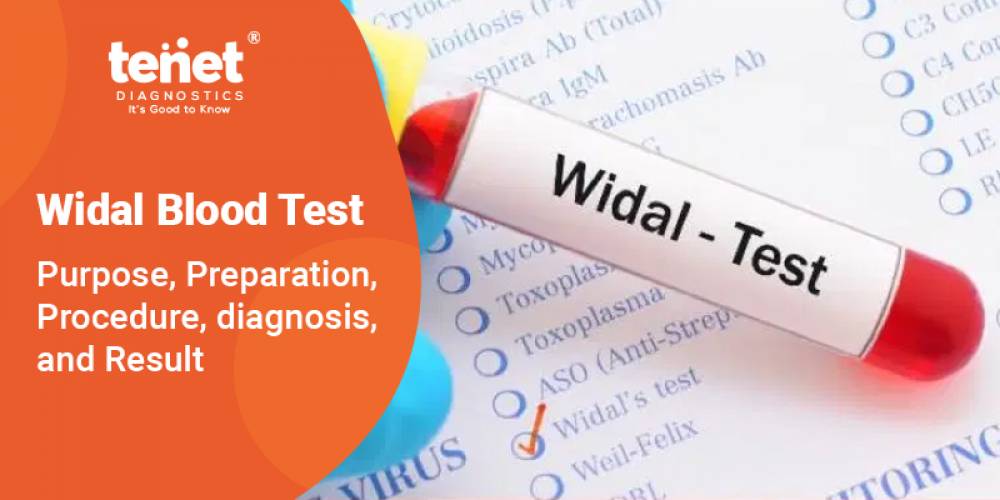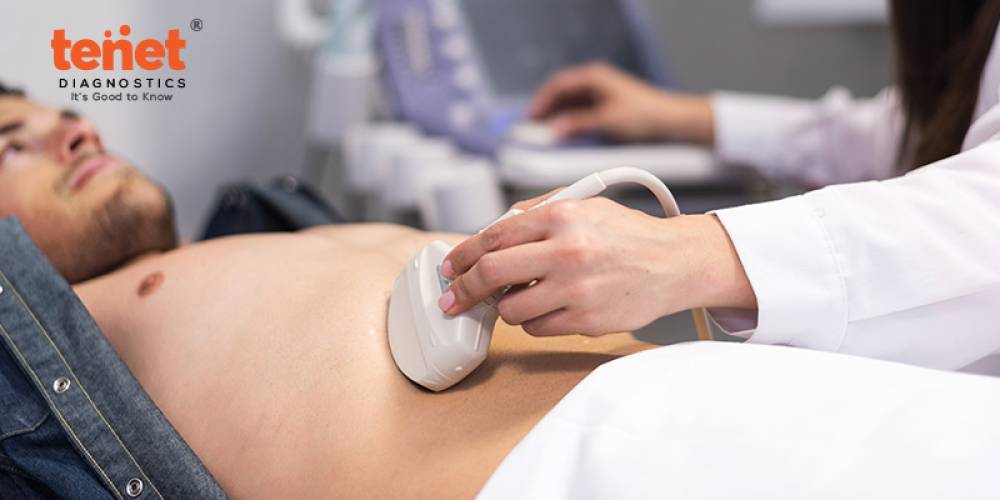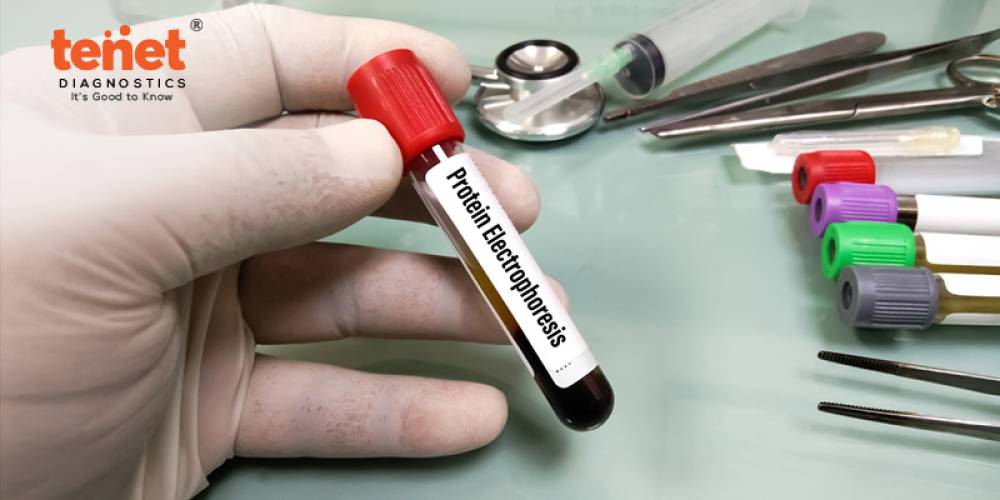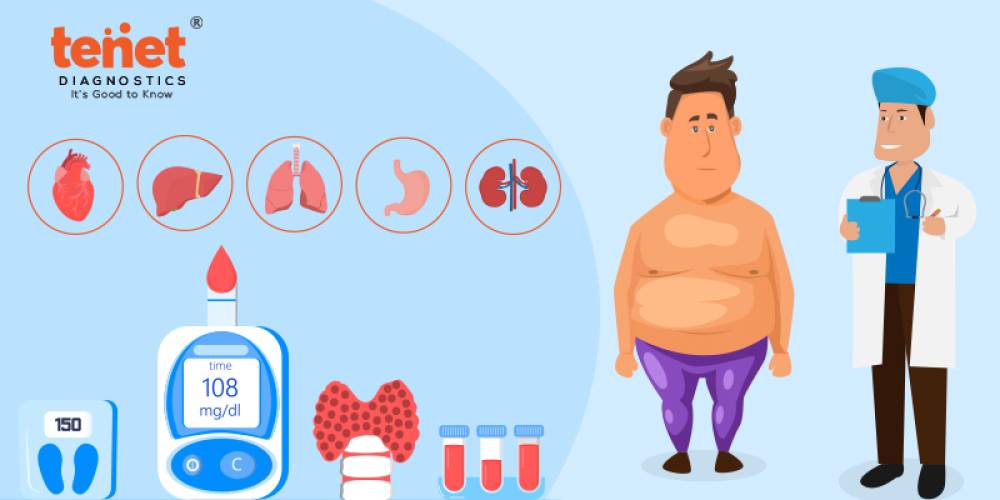The Widal blood test is a serological test that is used to diagnose typhoid fever and paratyphoid fever, two bacterial infections caused by Salmonella typhi and Salmonella paratyphi, respectively. The test is named after its creator, Georges Fernand Isidore Widal, a French physician who developed it in 1896.
The Widal test detects antibodies produced by the immune system in response to the bacteria. In this article, we will discuss the purpose, preparation, procedure, diagnosis, and interpretation of the test results of the Widal blood test in detail.
What Is a Widal Blood Test?
The Widal Test detects Typhoid and Paratyphoid fever, often known as enteric fever, which is caused by consuming food or water contaminated with Salmonella bacteria. This is caused by Salmonella typhi and Salmonella paratyphi A, B, and C.
Typhoid fever is a potentially fatal fever-causing sickness caused by the intake of food or water contaminated with the feces of a person infected with Salmonella typhi. In the widal test for typhoid, an individual's blood reacts with the Salmonella antigens on the slide, forming agglutination (clumping).
There are two methods of performing the Widal test: the slide method and the tube method. Here is how each method works:
Widal (Slide Method):
- Collect a blood sample from the patient and let it clot.
- After the clot has formed, centrifuge the sample to separate the serum from the cells.
- Place a drop of the serum on a clean glass slide and label it with the patient's name and the date.
- Add a drop of antigen solution (containing killed Salmonella typhi and Salmonella paratyphi) to the serum drop.
- Mix the two drops using a clean toothpick or glass rod, making sure they are thoroughly combined.
- Rotate the slide slowly for 4 minutes to allow agglutination to occur. Agglutination is the clumping of bacteria caused by the interaction between the antibodies in the serum and the antigens in the solution.
- Examine the slide under a microscope at 40x magnification to look for agglutination. The clumping of the bacteria indicates a positive result.
Widal (Tube Method):
- Collect a blood sample from the patient and let it clot.
- After the clot has formed, centrifuge the sample to separate the serum from the cells.
- Label 4 test tubes with the patient's name and the date.
- Add a different dilution of the antigen solution to each of the test tubes.
- Add a fixed amount of the patient's serum to each test tube.
- Combine the contents of each test tube thoroughly.
- Incubate the test tubes at 37°C for 24 hours.
- Examine the test tubes for agglutination. The clumping of the bacteria indicates a positive result.
In both methods, a rising titer of antibodies over time indicates a positive diagnosis of enteric fever. However, a single positive result is insufficient for diagnosis, as false positives can occur due to other infections or previous exposure to the bacteria. Therefore, the Widal test is often used with other diagnostic tests and clinical symptoms to confirm the presence of enteric fever.
Purpose Of WidalBlood Test
Symptoms and signs of the disease in its early stages include abdominal pain, fever, and a general feeling of being ill. The symptoms and signs are similar to those of other disorders at first.
As typhoid fever worsens, the symptoms often include:
- A very high fever is up to 104 degrees Fahrenheit.
- Headaches
- Usually, abdominal pain, constipation, and perhaps diarrhea later.
- Small red spots over the abdomen or on the chest (rose-colored spots)
- Loss of appetite and weakness
Other symptoms of Widal (typhoid fever) include:
- Body pains
- Blood in the stools
- Chills
- Severe fatigue
- Difficulty in paying attention
- The agitation, confusion, and hallucinations
Preparation For the Widal Blood Test
There is no specific preparation required for the Widal blood test. However, your healthcare provider may advise you to avoid certain medications or foods before the test. It is also essential to inform your healthcare provider about any medicines you are taking or any medical conditions that may affect the test results.
Diagnosis Using the Widal Blood Test
The Widal blood test diagnosis determines whether you have typhoid or paratyphoid fever. The presence of antibodies in the blood produced in response to bacterial infections is used to diagnose. The test detects four types of antibodies: anti-O, anti-H, anti-A, and anti-B. These antibodies are unique to the Salmonella bacteria and are not found in healthy people's blood. During the infection, the levels of these antibodies rise and can be identified in the blood using the Widal blood test.
Interpretations Of Results
If the patient's serum has antibodies against Salmonella typhi, they will react with the antigen in the reagent and cause visible agglutination (clumping) on the slide test. This antibody titer is the maximum dilution of the patient's serum sample, resulting in a clear visual agglutination with the Widal test antigen suspensions.
Normal range
There is no standard for the widal blood test normal range. A positive test result indicates that the body's immune system developed antibodies against the germs Salmonella typhi and Salmonella paratyphi in response to the infection. A titer of 1:80 or above is generally considered positive for typhoid fever or paratyphoid fever. However, the test results should be interpreted in conjunction with the patient's clinical symptoms and history. It should be noted that a doctor should perform the interpretation of test findings.
WidalBlood Test Price
The widal blood test cost varies from INR 480 to700, depending on location and additional expenses for sample collection, processing, and interpretation. Therefore, before the test, it is critical to confirm the Widal Blood Test Priceand other fees.
Final Words
The Widal blood test's purpose is todiagnose typhoid and paratyphoid fever, particularly in resource-limited situations. It is a straightforward and widely available test that may be carried out either at laboratories or clinics. The slide and tube methods are two methods of performing the Widal test.
TheWidal blood test should be used in conjunction with other diagnostic tests and clinical signs to confirm the diagnosis of typhoid or paratyphoid fever. Appropriate treatment should be administered depending on the clinical history and symptoms of the specific patient.







